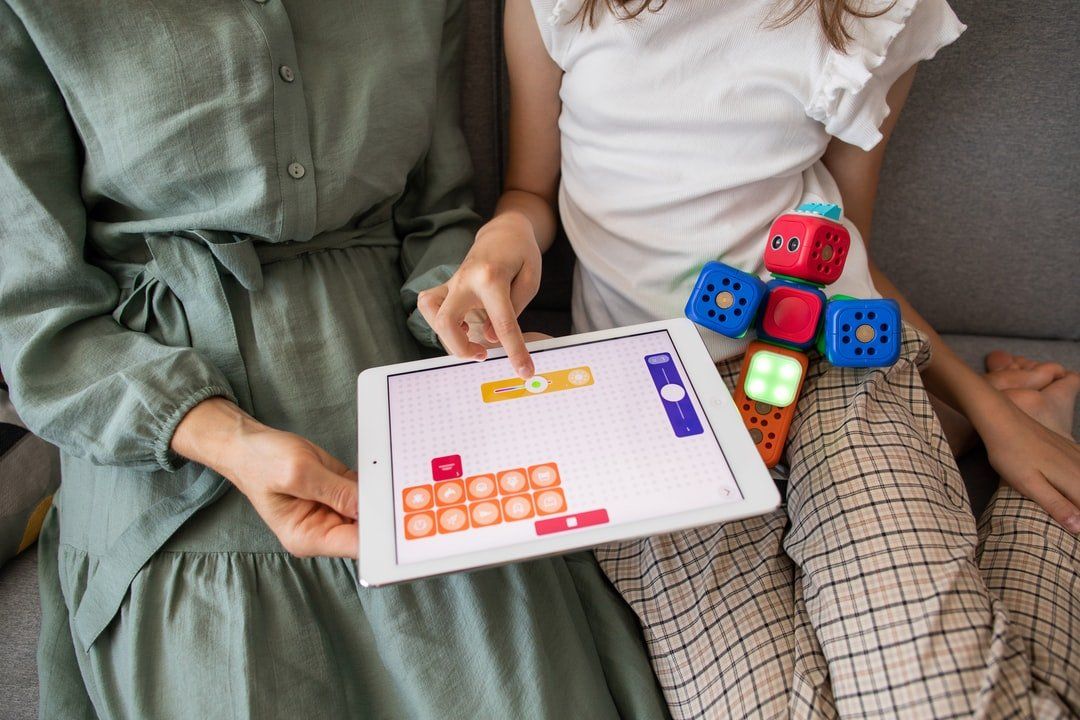Tailored for You: 8 Individualized Education Plan Benefits
November 21, 2021
Are you wondering about customizing your child's education? Read on to find out about Individualized Education Plan benefits for your child.
The past couple of school years have been years like none other.
Overnight, everyone had to go home and figure out how to make distance learning work. Some went back to the classroom after a few months, but some spent the entire last school year learning remotely.
Distance learning was difficult in many ways. Yet, it allowed many students to make custom learning environments for the first time. If your child is headed back into the classroom but would thrive from a personalized approach to their education, it may be time to look into Individualized Education Plan benefits for you and your child.
If you haven't done much research yet, the ins and outs of Individuals Education Plans, or IEPs, can be quite murky.
What qualifies a child for an IEP? What are the advantages and disadvantages of an IEP? Where can you find an Individualized Education Plan sample as an example of how to craft an IEP for your child.
The answers to these questions could fill an entire book, but this article is here to get you started on the research journey. Keep reading to learn the eight benefits of an IEP for you and your child.
1. Provides a Clear Understanding of Your Child's Needs
The first step in the IEP process is getting an evaluation for your child. This will help you and your educators understand their strengths as a learner as well as areas where they need the most support.
Gaining this clarity around your child's needs will help you to understand them better and to provide the resources they actually need in order to learn at their best. It also allows you to take a data-driven approach to your child's learning and place concrete goals and action items into their learning plan.
2. Gives You and Your Child Legal Protections in Relationship to Their Education
The accommodations laid out in the IEP are legally protected by the
Individuals with Disabilities Education Act (IDEA). Having this written document on file allows you to advocate for your child in the classroom. It also ensures that they are receiving the support they are legally entitled to have.
The process of putting an Individualized Education Plan into place also has legal support. The team must stay within the legally-specified timeline when moving a referral through the evaluation, planning, and implementation stages. You are also able to call on the services of an attorney or
education advocate to assist you in this process.
3. Helps Your Child Gain Access to Necessary Support Tools
Sometimes, a student doesn't need to leave the classroom in order to be able to learn. Maybe they just need some extra tools to successfully learn in the classroom with their peers.
Without a formal Individualized Education Plan, it can be difficult for your child to access learning aids, such as assistive technology, fidget tools, extended times for tasks, and personalized instruction. Having an IEP written down protects their right to receive access to these tools.
4. Makes Sure Everyone Is On the Same Page
A well-crafted Individualized Education Plan lays out exactly what your child needs at school, including their environmental and interpersonal support needs.
Because the IEP details these things explicitly, you know that you and your child's entire education team all have the same understanding and expectations of what your child's learning environment needs to be and what your expected outcomes are.
5. Prioritizes Your Child's Learning Needs
An Individualized Education Plan helps you to sort through your child's various learning needs. It also lets you identify the needs that are the highest priorities. By going through this process, you can focus in on the highest areas of support and create a plan to address those needs first.
The plan lays out an explicit road map for your child's learning and empowers you and them by laying out a detailed action plan for helping them to achieve their learning goals.
6. Helps You Customize Your Child's Learning Environment to Their Needs
Neurodivergent students, disabled students, and students with limited English proficiency are all examples of learners who are covered under the protections that Individualized Education Plans. These different kinds of learners all have very different support needs. Because of this, the IEP template is very broad and gives you the freedom to incorporate any modifications and accommodations that will help your child to learn at their best.
7. Provides a Framework for Assessing Your Child's Progress
Putting together an Individualized Education Plan for your child requires you to specifically state what you want your child to achieve in the school year. This ensures that the goals your child is striving toward are appropriate to their needs, interests, and current learning ability. It also gives you a benchmark for assessing your child's progress year over year.
8. Makes School an Enjoyable Place to Be
The ultimate goal of putting an IEP into place is that the action plan laid out in the document will help create a school environment where your child is able to learn and is excited to do so. This kind of environment fosters learning and creativity, helping your learner to thrive at school.
Put These Individualized Education Plan Benefits to Work for You
Now you know eight of the potential benefits of an IEP for your young learner. Use this knowledge to determine whether you want to pursue getting an IEP for your child. If you do decide that an Individualized Education Plan and its benefits are right for your child, use the information above to ensure that your child is getting everything out of their plan that they deserve.
Looking for support in building an Individualized Education Plan for your child?
Fill out our contact form today to schedule a free consultation with us to assess your needs and determine your next steps.

Are you frustrated after failing to reach and teach children with ADHD after trying every teaching technique you can think of? It can be difficult to know how to adapt your teaching style to help children with ADHD to have the best possible learning experience. Thankfully there are several strategies that you can make use of to help all children to have the best possible education. If you're wondering how to get better at teaching children with ADHD, read on and we'll tell you what you need to know. Understanding How Children With ADHD Learn the Best One of the first things to recognize about youth who have ADHD is that they seek novelty. Their attention naturally orients towards high-interest kinds of activities. This is why they thrive in learning situations where the curriculum is engaging and active. In order to offer children this opportunity, consider embracing activities that involve physical movement and motor activity. For example, if you are teaching children with ADHD about reading street signs, you should invite the child to be active in order to practice obeying what the signs say. You should also try to give the child options to choose from. By letting them have options, they have more freedom to be curious. This is important because it gives them chance to lean into their strengths in order to learn and grow. Children with ADHD struggle in situations where they get bored, such as while they're waiting for a teacher to draw out instructions for an activity on the whiteboard. If they need to wait for their turn to complete a task, they'll need more stimulation than other children will. They also have a need to feel competent at what they're doing. This is why you should make a point of rewarding the child you're working with by offering things like badges, prizes, high fives, and opportunities for leadership. Teaching Children With ADHD by Recognizing Their Social Needs and Challenges Make sure that you make a point to help children with ADHD to sense their relationships with others. Since social interaction is usually their most valued kind of stimulation, it is imperative that you offer kind support and individualized attention. Kids with ADHD also like to see the emotional responses from others. This is why it's common for them to be attracted to kids who are known to be troublemakers. Many teachers often don't realize that their angry and aggressive responses to children with ADHD who are causing trouble only serve to reinforce the behavior that the teachers are trying to stop. Instead, it's a better idea to be calm and unemotional when trying to redirect a child who has ADHD. Top Strategies Teaching Strategies for Children Who Have ADHD There are many different strategies for children with ADHD that can support them to have the best possible learning experience. Here are several of the most important things that you can do to help them. Match Their Skill Level You should first make sure that you're assigning schoolwork that matches a students' skill level. The reason for this is that they will usually want to avoid classwork that is too difficult to do or that is too tedious for them. Give Many Options You should also give the children as many options as you can. For example, you could offer them a list of ten activity choices for practicing math equations. You might consider using flashcards, writing on the whiteboard, or on their digital device. Visual Reminders Are Important Another of the great strategies for children with ADHD is to provide visual guidance. If you're going to explain a skill such as telling the time, do this by using an overhead projector or a whiteboard in order to explain the activity's instructions. Present Important Concepts in New Ways You could also start finding engaging ways to display important ideas that you want children to work with. One way to do this is by writing these concepts onto bright posterboard which you hang up around the classroom. Encourage Group Participation When you encourage your class to participate as a group, you help children with ADHD to be more engaged in what they're doing. You can do this by requesting students to write responses to exercises on a dry erase board, having students speak responses to questions in unison, and encouraging your class to raise their hands if they agree with something that you say. Go Out of Your Way to Offer Accommodations for Children With ADHD There are many children who will need special accommodations in order to help them to learn in the best way possible. Some of these accommodations could be more complex. Other types of accommodations are straightforward enough that schools for children with ADHD can easily offer them. This might include things like keeping an eye on a student's work or creating a plan to assure that they don't fall behind in class. You should also try giving students more time on the tests they're taking, offering shorter assignments, and breaking longer assignments into smaller segments. There Are Many Easy Ways to Support Children With ADHD Once you know how to start teaching children with ADHD, it's easy and fun for you to do. Many teachers don't understand the unique needs that children with ADHD have. Once they recognize their unique needs, it's much easier to create situations where all of their students can thrive. It's important to recognize that you're not alone in teaching children with ADHD. This is why we offer various services that are tailored for each person who we work with. If you want to support children with ADHD who you work with in the best possible way, please visit our services page in order to find out how we can help you.

The unique parenting journey of a special needs child is a path that is often difficult to navigate. It's a path that may involve different treatments and interventions. It's not what you expected. You listen to the specialists, read all the books, and learn to understand your special needs child. Yet, you may still second-guess the important role that you play in your child's special needs education. You shouldn't. You are your child's expert and greatest supporter. As the parent, you have the most complete understanding of your child's physical, emotional, and social development. Your family dynamic is unique. This dynamic is the continuity in your child's life. Sharing family information may give insight into what is needed in the classroom environment. Involvement in your child's special needs education will make a positive difference in the overall learning experience. So how do you get involved? Learning the educational options available and choosing the best approach to meet your child's education is a place to start. Special Needs Education Special Education is a broad term that refers to services that can be provided for your child. This approach to instruction should address the specific needs of your child's disability. The public school system in your area will determine access and opportunities for your child. Educational standards are also designated by your public school system. Adaptations for your child's physical or movement needs will be given as deemed necessary. This does not mean that your child will be in a special education or a resource room all day. According to the Individuals with Disabilities Education Act (IDEA), children who receive special education services should be in the least restrictive environment. Your child should be learning in the same classroom as other children. This will be made accessible with the appropriate accommodations. Individualized Education Plan (IEP) The Individualized Education Plan is covered under the Individuals with Disabilities Education Act. Teachers, parents, administrators, and other school personnel work as a team to create an educational program. This program is developed to meet the individual needs of the child. The IEP evaluates a child's current educational performance. This will take a look at the special needs of the child, how those needs affect involvement in the classroom, and learning outcomes. The IEP includes reasonable annual goals for the child broken down into short-term objectives. These benchmarks tackle physical, behavioral, or social needs, as well as academics. Any supplemental services or classroom modifications needed to assist the child will also be listed on the IEP. Parental involvement is required at the annual IEP meeting, which can be intimidating. But remember, you are the most important member of your child's educational team. You know your child best. Take the opportunity to ask questions and give input to customize a learning experience that fits your child. The 504 The 504 plan was established in 1973 and is a section of the U.S. Rehabilitation Act. It provides accommodations for students with physical or mental impairments within a regular classroom setting. When a student is not eligible for special education services or an IEP, a 504 plan will provide the modifications for academic success. Like the IEP, parents are part of the 504 team, and accommodations are reviewed annually. With a 504 , a parent can call for a plan review at any time to evaluate academic concerns or request other appropriate changes. Your involvement in the process will assist in customizing your child's educational experience. This can ensure your child's academic and social success. Parent as Educational Partner There is no one more invested in your child's success than you, the parent. You understand your child's specific requirements to function happily in life. Embrace your role as an educational partner and become a proactive parent. Through interactions and observations of your child, you can share changes or discoveries with the education team. By sharing this information, you offer the educators insight into behaviors that may not be observed in the classroom. Your continued involvement as a parent will increase your child's chance for personal and academic success. Development The role of parents in special needs education is to assist in helping your child's development. You understand there are many challenges ahead, but there will also be many triumphs. The developmental path may not be typical, but you want your special needs child to have the support necessary to meet as many milestones as possible. Communicate with your education team. Let the teachers know you are invested in supporting classroom efforts at home. Partnering with your child's teachers will reinforce the learning efforts on both sides. You understand that your child's development may not be a straight line. Know that each step achieved by your child is an extraordinary success. Advocate All that you do for your child comes from a place of love and caring. Advocating for your child requires research and explaining the disability. You will need to have many conversations with each professional involved in your child's life. This can be exhausting, yet you soldier on. As the parent, you believe in your child and know you must act on their behalf. As an advocate, your parental involvement in special needs education will give the teacher a better understanding of your child. Through advocacy, you will establish the foundation for future conversations. This will build a cooperative relationship that benefits your child and helps them grow. You Are Not Alone As a parent, understanding the pathway of a special needs education for your child is difficult. Yours is not a typical road of parenting. You may worry and second-guess decisions. There may be many potholes along the way, making you feel unsure and discouraged. You are not alone. Aliada Educational Advocacy, My Learning Ally , offers support and consultation for parents learning to navigate the educational system for a child with special needs. Experienced consultants are available to listen to your concerns and work with you to find the best solutions for your child. Reach out to us . We are here to help.


